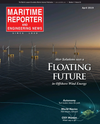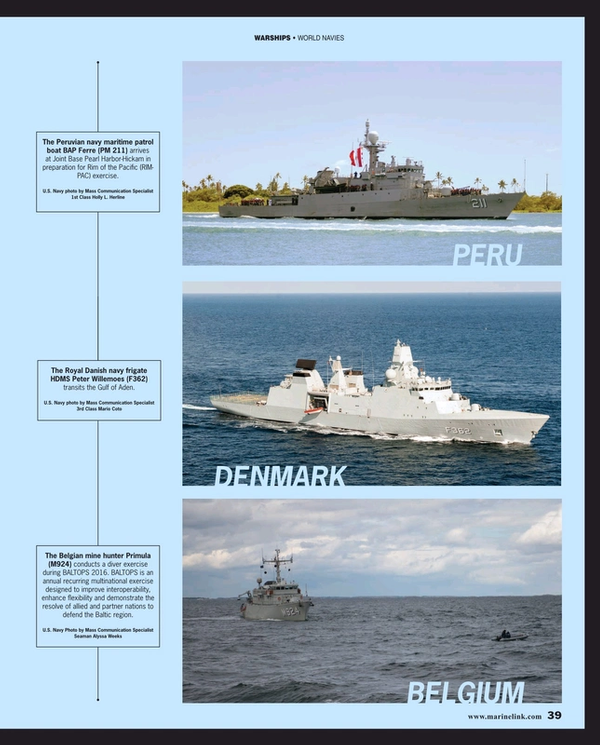
World Navies Report: Belgium
Navies operate on a spectrum between deterrence and defense, to include offensive operation, support of foreign policy, and power projection to civil affair and humanitarian assistance and disaster response. Many have constabulary responsibilities, and it could be argued that, with the exception of the largest navies, most are more like a coast guard than a military force in their normal responsibilities.
Every Navy is different. Yes, they all share similar challenges of acquisition, maintenance, manpower, basing, communications, information systems and the usual requirements of a military service, compounded by harsh maritime environment. Each nation and their navy has a different place to operate in, a different nation and resources to protect, and different threats to protect them from.
That’s what makes studying the navies of the world interesting—to see how they have addressed their specific challenges with the resources they have applied to them. Here we look at Belgium.
For Belgium, the answer to maritime security may be blowing in the wind
Belgium has outsized need for naval presence and maritime security. It’s relatively short coastline—just over 40 miles—includes the approaches to some of the busiest seaports in the world.
Belgium and the Netherlands are currently cooperating on a joint warship program for frigates and mine warfare ships, with the Dutch taking the lead for the new surface combatant and Belgium’s Navy in charge of the mine countermeasures ship effort.
Not only does Belgium have to monitor and protect a busy stretch of Europe’s coast, but those waters are also full of offshore wind farms, with hundreds of wind turbines. But while those structures make navigation more complicated, the Belgian Navy sees them also as useful.
“There is private owned infrastructure in place that could be shared with the Navy. Antennas and radars can be mounted on the structures, offshore camera images can be shared to increase the maritime awareness and maritime picture in our coastal waters,” said Captain Jan De Beurme, Chief of Staff of the Belgian Navy. “In return the Navy can assure the security of these critical infrastructures that the wind farms are to Belgium.”
Read World Navies Report: Belgium in Pdf, Flash or Html5 edition of April 2019 Maritime Reporter
Other stories from April 2019 issue
Content
- Maritime Fatigue: Just another band aid? page: 10
- OSVs: Restarting that Idled Vessel page: 12
- OSV Market: Which Way is Up? page: 14
- A New York State of Mind page: 20
- Interview: Astrid Skarheim Onsum, SVP, Head of Wind, Aker Solutions page: 24
- Maritime Autonomy: The Reality page: 28
- World Navy Report: Peru page: 38
- World Navies Report: Denmark page: 39
- World Navies Report: Belgium page: 39
- World Navies: Taiwan develops indigenous combat capabilities page: 40
- World Navies Report: Malaysia page: 41
- World Navies: Brazil´s Riachuelo Submarine page: 42
- Design: RNLI’s Shannon Class Lifeboat page: 44
- e-Navigation Passage Planning transformation page: 52


